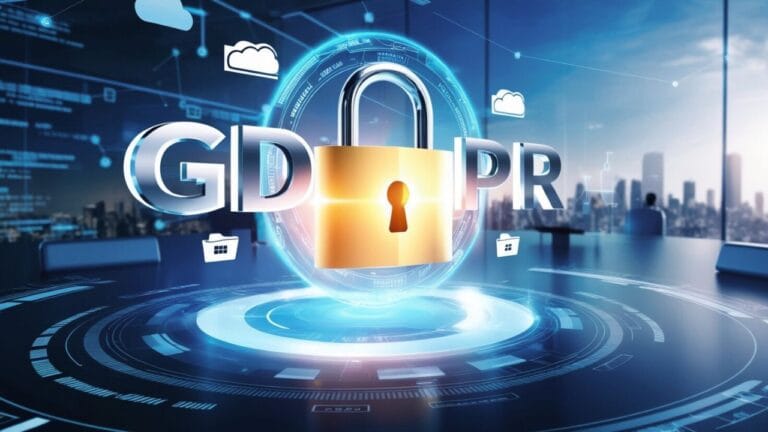Feeling overwhelmed by GDPR? You’re not alone. Many businesses, from startups to established brands, struggle to navigate Europe’s strict data privacy laws. But here’s the good news: GDPR compliance isn’t just about avoiding fines (though that’s important). It’s about building trust with your customers and future-proofing your business.
GDPR compliance means adhering to the regulations set forth by the General Data Protection Regulation to ensure the lawful processing and protection of personal data of EU residents.
Introduced in May 2018, the GDPR aims to give individuals greater control over their personal data and to harmonize data protection laws across the EU. Compliance involves implementing measures that uphold the principles of data protection, such as lawfulness, fairness, transparency, purpose limitation, data minimization, accuracy, storage limitation, integrity, and confidentiality.
The truth? Most companies overcomplicate GDPR. They drown in legal jargon, waste money on unnecessary tools, or worse, ignore it altogether. But with the right approach, compliance can be simple, cost-effective, and even beneficial. Let’s break it down step by step.
“Do I Really Need GDPR Compliance?” Here’s What’s Really Happening
If you handle any EU customer data, yes, you need GDPR compliance, no matter where your business is based.
Many companies assume GDPR only applies to European businesses, but that’s a dangerous myth. The regulation affects any organization processing EU residents’ personal data, whether you’re in New York, Nairobi, or New Delhi.
The Root of the Confusion
Most businesses blame “complicated laws” for their GDPR struggles, but the real issue is misunderstanding scope and risk. A 2024 survey by Cisco found that 53% of small businesses still don’t fully understand GDPR requirements, leaving them vulnerable to fines up to €20 million or 4% of global revenue, whichever is higher.
A Real-World Wake-Up Call
Take Sarah, an e-commerce store owner in Canada. She thought GDPR didn’t apply to her, until a German customer filed a complaint about her email marketing practices. After a stressful audit, Sarah had to overhaul her data collection process and pay a €15,000 fine, all because she didn’t realize her EU customers were protected under GDPR.
Key Takeaway: If you have EU website visitors, customers, or even newsletter subscribers, GDPR applies to you. Ignorance isn’t an excuse in the eyes of regulators.
The Hidden Factor Everyone Overlooks: Data Minimization
GDPR isn’t just about securing data, it’s about collecting less of it in the first place.
Most businesses hoard customer information “just in case,” but this actually increases compliance risks.
What the Research Says
A 2023 study in the International Journal of Data Privacy found that 62% of GDPR violations stem from unnecessary data collection. Companies that adopted data minimization strategies saw 40% fewer compliance issues and higher customer trust scores.
Actionable Tip: The 2-Minute Data Audit
Ask yourself:
- “Do I really need this customer data?” (e.g., Do you need a phone number for a newsletter signup?)
- “How long should I keep it?” (GDPR requires data deletion when it’s no longer necessary.)
Example: A fitness app reduced GDPR risks by removing mandatory location tracking, simplifying compliance while improving user experience.
Myth Debunked: “GDPR Kills Marketing”
GDPR doesn’t kill marketing, it forces smarter, more ethical marketing.
The myth that “GDPR ruins lead generation” persists because businesses rely on outdated tactics like buying email lists or hiding consent in fine print.
Old vs. New Approach
| Old Marketing | GDPR-Compliant Marketing |
| Buying email lists | Building opt-in audiences |
| Pre-ticked consent boxes | Clear, granular permissions (“Yes to newsletters, no to ads”) |
| Keeping data forever | Auto-deleting inactive leads after 1–2 years |
Visual Cue: Think of GDPR Like a Bouncer
Imagine your customer data as a VIP club. GDPR isn’t “locking the door”, it’s ensuring only willing, informed guests enter. The result? Higher-quality leads and fewer spam complaints.
Step-by-Step Fix: GDPR Compliance in 30 Days
Follow this phased plan to achieve compliance without overwhelm.
Phase 1: Audit & Cleanup (Week 1–2)
- Map all data flows (use free tools like Google’s Data Safety Questionnaire).
- Delete unnecessary data (e.g., old leads, inactive accounts).
Phase 2: Policies & Consent (Week 3)
- Update your Privacy Policy (use GDPR.eu’s generator).
- Implement clear consent checkboxes (no pre-ticking!).
Phase 3: Training & Maintenance (Week 4+)
- Train staff on data handling best practices.
- Schedule bi-annual compliance reviews.
Pro Tip: Bookmark the official GDPR checklist for ongoing reference.
Final Thoughts: GDPR as a Competitive Advantage
GDPR compliance isn’t a burden, it’s a trust signal. In a 2025 Edelman Trust Barometer report, 81% of consumers said they’d choose a GDPR-compliant company over a competitor. GDPR compliance is not just a legal requirement but a strategic imperative for businesses operating in today’s data-driven world.
By embracing GDPR principles, businesses can foster trust, enhance data security, and position themselves for long-term success. While achieving compliance may require significant effort, the benefits of protecting personal data and building customer confidence are well worth the investment. By embracing transparency, you’re not just avoiding fines, you’re future-proofing your brand.





